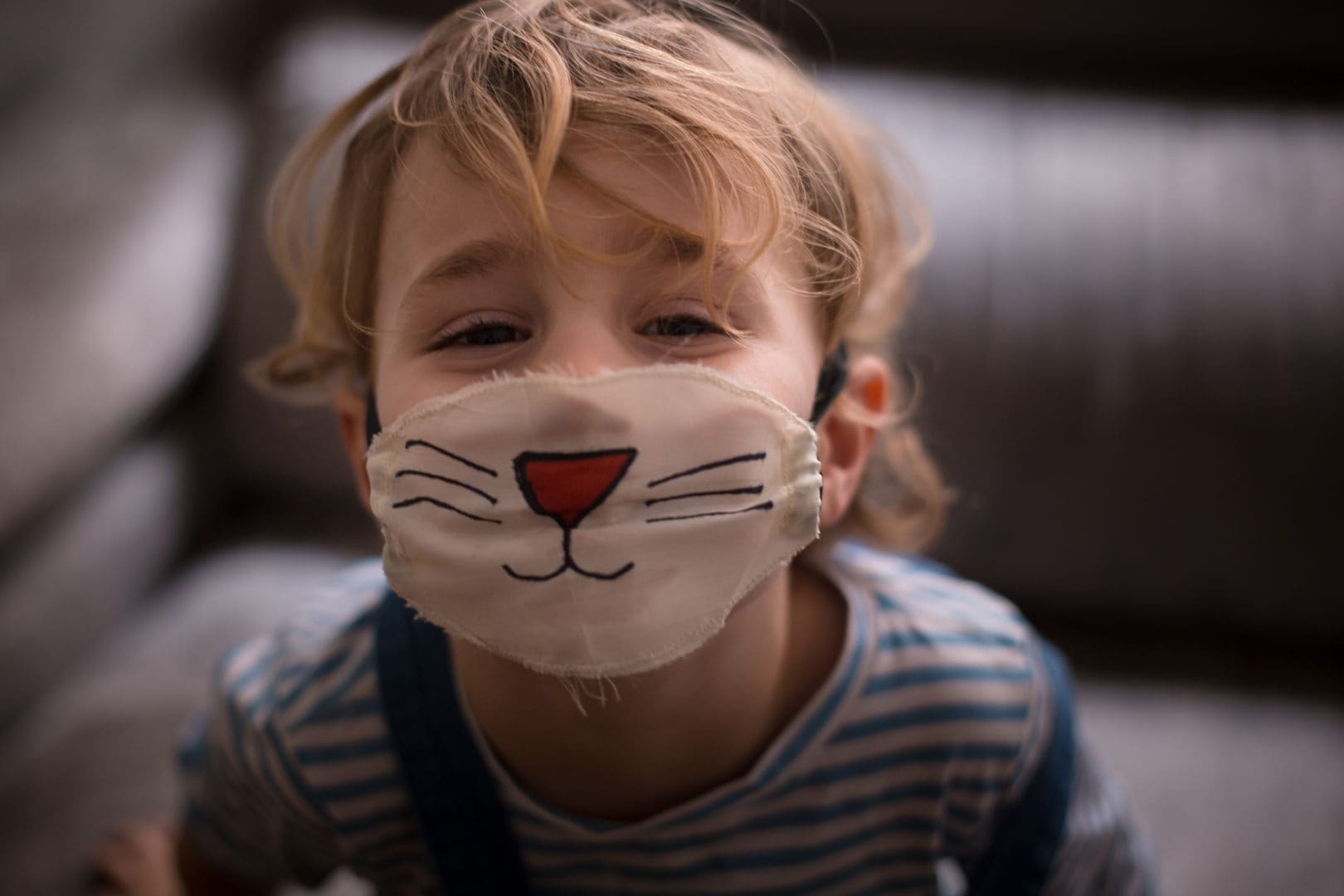Social distancing with children is no easy feat. Kids are notorious for touching everything within their reach, and many of them have no concept of personal space. As states relax stay-at-home orders and child care facilities reopen, a major priority for parents, caregivers and leaders alike is how to keep children safe. As a result, some state governments are advising parents that kids should start wearing face masks at day care and that advice has some parents on edge.
Currently, in both Missouri and Pennsylvania, guidance on reopening recommends any child over 2 years of age should wear a mask at day care whenever possible. The recommendation is not mandatory, but it is in keeping with guidelines from the Centers for Disease Control and Prevention (CDC). The CDC guidelines for child care programs state:
“When feasible, child care staff members and older children should wear face coverings within child care facilities. Cloth face coverings should NOT be put on babies and children under age 2 because of the danger of suffocation.”
The CDC also recommends limiting class sizes, increased cleaning and hand-washing, designating an area to isolate kids who show signs of illness, staggering arrival and drop-off times and keeping children six feet apart during naps. But it’s the mask advice that’s causing the most concern for parents, especially as some day cares or child care centers opt to explicitly follow the CDC guidelines.
Ceara Layne, a Missouri parent who spoke with Fox 4 News Kansas City, asks, “How am I supposed to explain to my 4-year-old that she’s going to be required to wear a mask eight hours a day, five days a week, 40 hours? That’s a lot for a 4-year-old.”
Other parents have been expressing their worries about new mask rules too:
For most parents, it’s a struggle just to get kids to wear shoes and socks. The prospect of getting them to not only wear a mask but keep it on for several hours a day without touching it and playing with it seems impossible to some. They might also be wondering, does it actually help?
Around the country, masks are such a contentious issue that they’ve actually sparked protests and physical altercations. But it’s important to remember that masks are recommended by health experts for a reason. While masks may not prevent illness entirely, a study by the University of Hong Kong found that wearing a mask could reduce the likelihood of transmitting COVID-19 by as much as 75%.
“Masks help us contain our own germs to ourselves,” Dr. Kathryn Moffett, a pediatric infectious disease specialist in Morgantown, West Virginia, tells Care.com. “It protects me from you, and it protects you from me. We wear a mask out of respect to everyone else, so if I were to have COVID-19 or anything else, then I’m not giving you my infection.”
Parents might assume children don’t need to wear masks like adults do, since COVID-19 has impacted fewer children than adults. However, children can still be asymptomatic carriers who spread the infection to other children, care providers or vulnerable family members at home. There’s also concern about the risk of kids developing Multisystem Inflammatory Syndrome (MIS-C), a rare but serious infection doctors believe may be linked to COVID-19.
“I would remind hesitant parents that children are some of the worst offenders when it comes to touching their faces, especially their noses, mouths and eyes where viruses are most likely to enter the body and cause infection,” says Dr. Jill Pedalino, a board-certified pediatrician in Nutley, New Jersey. “Even though children do not always respond positively to wearing a mask, it will reduce the incidence of face touching and the potential development of an infection.”
For older kids, wearing a face mask, even for several hours at a time, is not likely to cause harm. “Although there is little to no risk of breathing in too much carbon dioxide, if a child does feel dizzy or claustrophobic under a mask, then it should be removed,” says Pedalino. “However, the masks most children are wearing are cloth or surgical masks, and are not tight-fitting and do not pose a risk.”
Additionally, Pedalino tells Care.com kids probably don’t need to wear a mask 100% of the time. “In general, a face mask is advised when there is a chance the child may not be able to adhere to the physical distancing recommended by the CDC,” she says. “I support the use of masks in these situations … I do feel that a mask is not needed if a child is outdoors to play or go on a walk in an area where they can stay six feet away from others.”
As for how to keep kids’ masks clean, Moffett says to treat it like you would any piece of clothing. “If your clothing gets wet, you’re not going to continue to wear it,” she explains. “So if they’re really sneezing, coughing or, for whatever reason, they get wet, then the mask needs to be changed. Masks should be washed when they’re soiled, and they should be washed like you would wash clothing, so after each daily wear.”
Ultimately, it will be up to parents to decide whether or not their child should wear a mask or take part in a child care program that requires masks. No one can guarantee that masks will prevent infection, but it could play an important role in lowering the rates of infection, especially as parents and their kids get back to work and day care.
“We don’t want to be overwhelmed with COVID-19,” says Moffett. “We’re susceptible, more people are going to get it, and we’re going to march through this very slowly. Social distancing and masks are [recommended] because we want to slow the spread.”




